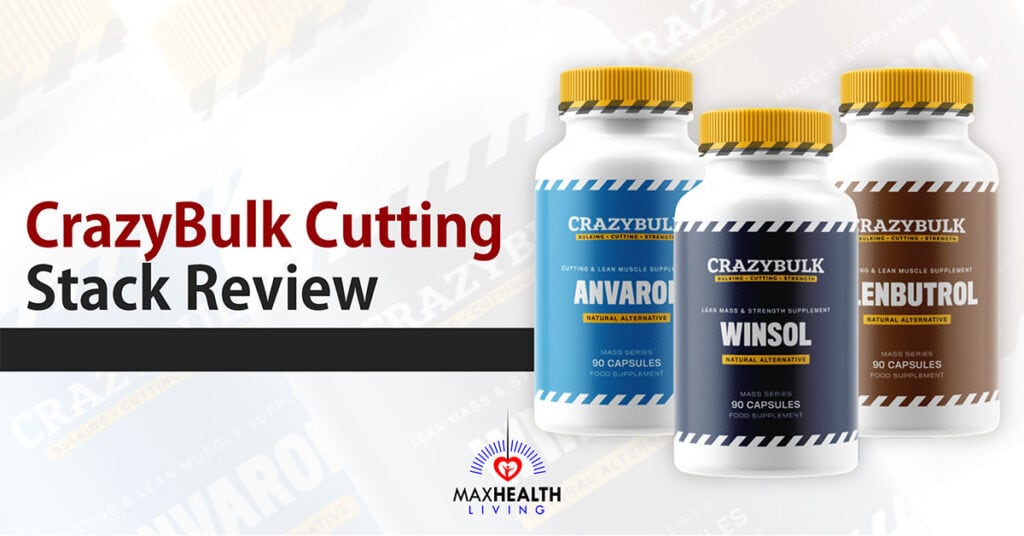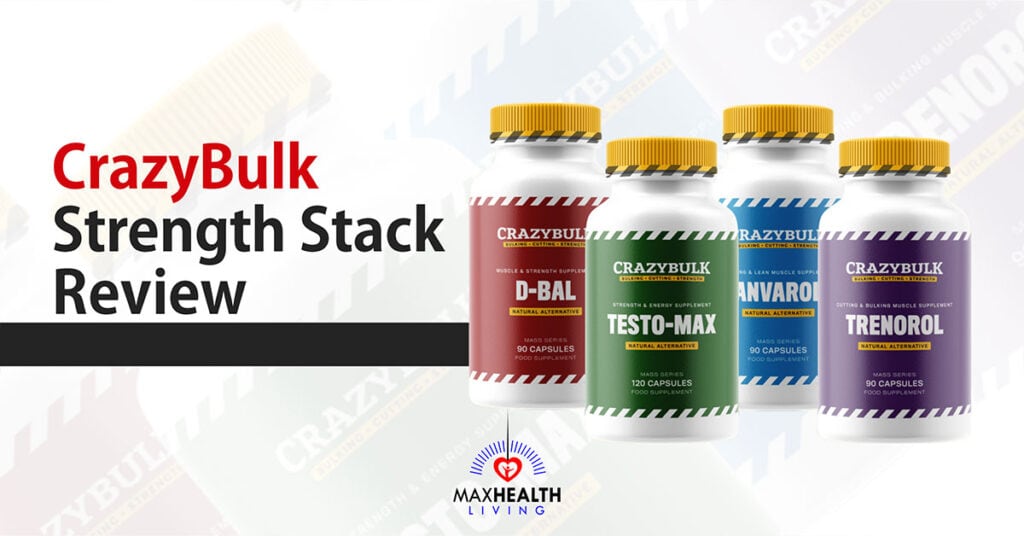Is a 15-Minute Workout Enough to Build Muscle?
Max Health Living is a reader-supported site. Purchases made through links may earn a commission. Learn more.
When it comes to getting fit, many people think they need to spend hours in the gym.
There’s no doubt that a 15-minute workout is better than no workout at all. But can you really build muscle in such a short time frame?
We can all agree that building muscle is hard enough – but you don’t have to give up on your goals because of your schedule. Today we’re explaining how you can turn 15 minutes of exercise into serious, visible muscle gains.
We’ll be discussing the limitations of short workouts, how you overcome them, and how you can get the best out of your body with as little as 15 minutes a day.
The Problem: Building Muscle Without Much Time
Balancing multiple demands – work, studies, family, obligations, hobbies, promises can be difficult.
It’s harder to fit a “perfect” workout into this kind of schedule when you feel like you’re struggling to even find time to catch your breath.
Modern lives keep stacking up the demands, and the result is that workouts can get pushed out of the picture. If you want to improve yourself and build muscle, these workouts might get compressed down to as little as 15 minutes.
The goal of this article, then, is to get the most from 15 minutes and focus on how you can make this small sliver of time work for you.
Life doesn’t always work around your schedule – so you need a way to work out around the chaos in any spare time you might get.
Whether this is a constant problem or a one-time thing, having a short workout is effective if you’re smart. It’s not going to build maximum muscle mass, but it can help you progress, no matter how experienced you are.
Are 15 Minutes Enough To Build Muscle?
Yes – a 15-minute workout is a great way to build muscle if it’s all the time you have. It isn’t optimal, but you can build muscle and improve your physique with even a few small workouts.
The real revelation is that 15-minute workouts will only work as hard as you do.
They’re a workout type that trades time efficiency for hard, balls-to-the-wall work while you’re doing them. They require you to push the pace for 15 minutes to fit more work into less time.
This is why 15-minute workouts aren’t more popular: you can fit an hour of workout into 15 minutes if you’re working 400% harder. It’s a simple but brutal workout style that can build tons of results in nearly no time, but it requires a lot of grit and willingness to keep pushing when tired.
Time-Efficiency: How to Make Better Short Workouts
How do you make a 15-minute workout effective for building muscle mass?
We’ve put together a shortlist of the most important things you can do to ensure that your 15-minute workouts are building muscle and helping you progress.
Improve Intensity
This is the most important factor: work harder. You’re not spending much time exercising, so you need to make sure it’s spent at the absolute limit of what you can do – safely and with good technique/movement.
This means less rest, more challenge, and starting near the maximum of what you can do.
That means working on challenging exercises and reps the whole time and being willing to step down to a simpler or lighter exercise as fatigue sets in; just don’t stop.
Less Rest
If you’re doing a 15-minute workout, you want to make sure there’s as much exercise as possible – and as little rest as possible.
The work needs to take up all of the time while resting is cut back or removed completely.
It’s more important to stay working to provide more mechanical tension and metabolic stress in the muscle. This is what causes muscle growth, and – with 15 minutes of consistent high-effort work – you can put far more in with less rest.
You want to take some rest – but try and structure it. If you’re spending 15 minutes, try setting out 45 seconds on, 15 seconds off rest structure. If you can do even less, you’ll spend more time building muscle and catching your breath less.
A smooth, consistent pace for 15 minutes means a ton of work – and all the muscle that builds.
More Often
One of the easiest ways to make your workouts more effective is to do more of them. If you’re training for 15 minutes at a time, there’s no reason you can’t train 6-7 days a week.
The actual effect on your body may be less than a longer workout, but that means you’ll be able to work out more often without overtraining.
Training for 15 minutes every day of the week still adds up to nearly 2 hours of constant exercise if you’re pushing the pace. That’s more than most people spend exercising across 3, 1-hour sessions. The results will speak for themselves – especially if you’re using smart, well-built workouts.
Better All-Purpose Workouts with Compound Movements
Your workouts should be well put together to get the best from your time.
Fifteen minutes isn’t a long time, but it is enough to train your whole body if you’re using the right exercises – or a comprehensive muscle group workout if you’re splitting by body part. This is one of the best times to do a body part split, as long as they overlap (e.g., arms and back/bis).
Focus on using heavy compound exercises to get a larger impact and ensure proper, well-rounded development.

A workout comprising dumbbell squats, RDLs, lunges, a walking dumbbell “death march,” and lunges with a calf raise is a simple idea but overlaps to produce a great 15-minute workout – if you put in the right intensity.
Compound exercises let you get more results in less time and should be used to overlap as well as possible, focusing on important muscles and developing their stabilizers and related muscles.
Supersets and Circuits
Supersets, circuits, and combining different exercises can be a simple but effective way to fit workouts into your schedule.
You can perform supersets of opposing movements like dumbbell bench press and dumbbell row. This is an antagonist superset, and it’s one of the best ways to work both sides of your body, building more muscle in less time while supporting the joint and improving co-contraction for better strength.
On the other hand, you can always use superset or ‘circuit’ exercises without overlap.
Squats and overhead press don’t share much, so you can superset them and keep each exercise relatively fresh. It doesn’t have overlapping benefits – but it will save you a significant amount of time.
Be Humble and Work with Light Weights
Don’t think too much about the weight – there’s no way you’ll perform well for the whole 15 minutes. It takes humility to use a much lower weight than you’re used to to get better and put in consistent work at a good pace.
The more you’re willing to work in the 50-75% range for your workouts, the more you’ll get done.
You can start with heavyweights, but the focus should be on doing tons of work with back-off sets and trying to build more work capacity. Weight can be high at the start, but you need to up the pace if you can use heavy weights for the whole 15 minutes.
Lock Down Your Out-Of-Training Factors
There’s never a bad time to improve your out-of-training factors: food, sleep, supplementation, hydration, and recovery.
The more time and effort you put into the out-of-training factors, the more every rep and minute of exercise will contribute to building more muscle mass.
Work on these factors wherever you can and make good choices. They’re the medium that turns exercise into muscle mass. You may find you’re gaining muscle faster and more effectively with 15-minute workouts and a good diet than with longer workouts but worse eating.
More protein, carbs appropriate to your daily activity levels, and a small but consistent calorie surplus are the way to make muscles grow.
15-Minute Workout FAQ
Is a 15-minute Workout Effective?
15-minute resistance training or gymnastic workouts can be effective with proper pacing and exercise selection. You need to keep intensity high and rest periods low, but you can pack in tons of great workouts if you’re smart.
How Many Minutes Should I Workout a Day to Gain Muscle?
You should exercise 45+ minutes per day, but you can gain muscle with as little as 10-15 minutes if you push the pace. This requires lots of work in that small timeframe, which means high-intensity interval training and assigned “on / off” periods can help structure workouts.
Are 15 minutes of Weights Enough?
While it’s not optimal, you can build muscle with 15 minutes of weight training.
This is enough to stimulate muscle growth and strength gains, especially with compact workouts that use lots of reps at lower weights across the 15-minute workout.
Can I Work Out for 15 minutes Twice a Day?
Yes – you can use two workouts a day at 15 minutes each. This might not be optimal for strength and muscle, but it still adds up to a significant amount of exercise and will help you get more muscular, fitter, and stronger.
Is Exercising 20 Minutes a Day Enough?
Twenty minutes a day is enough exercise to stay mostly healthy, but you should aim for more.
If you’re stuck with a schedule that only allows 20 minutes, that’s a good start, and you can still get more muscular, improve strength, and get fitter with this small amount of time.
What Happens If You Run 15 Minutes a Day?
Running 15 minutes a day is a short workout but will help you build endurance, fitness, and health. It will also improve the strength of the tendons and muscles in your legs and core if your technique is good.
Running 15 minutes a day is not optimal for endurance or fat loss, but you can still progress it patiently with intervals, slowly increasing your speed and distance. It’s a good place to start!
Can Short Workouts Build Muscle?
Short workouts can build muscle, but they typically rely more on shorter rest, lighter weights, and varied exercises. This makes them a great choice for everyday training, which helps you build muscle more effectively.
Can You Build Muscle with 10-minute Workouts?
Yes – you can build muscle with a 10-minute workout – but it will require a much higher pace than a longer workout and may provide sub-optimal results.
10-minute workouts aren’t the best choice, but they can help you build more muscle and stay fit, especially if you don’t have a choice.
When you’re struggling for time, a short workout is better than no workout – and you can still get good results if you push the pace, reps, and sets instead of weight.
Is a 10 Min Ab Workout Enough?
10 minute workouts are great for abs and core muscles, which lend well to circuits, supersets, and other low-rest training styles. This makes ab workouts one of the best and most intuitive short workouts, even for 10 minutes.
Final Thoughts
Fifteen minutes is enough to build muscle if you’re smart about your workouts and push the envelope on intensity and pace. This is a small cost for turning little time into a significant change to your physique.
It’s going to take some hard work and a lot of sweat, but muscles will respond to the time you spend exercising. There’s no secret: cram more work into less time using light weights, smarter workouts, and a higher pace that eschews rest.
If you’re committed to changing your body, 15 minutes spent with a pair of dumbbells – even at home – can be a huge stimulus to change.
Remember that your lifestyle outside of exercise matters, and consider exercising every day (or nearly) to make up for the time you’re not spending lifting.
Important Disclaimer: The information contained on MAX HEALTH LIVING is intended for informational and educational purposes only. Any statements made on this website have not been evaluated by the FDA and any information or products discussed are not intended to diagnose, cure, treat, or prevent any disease or illness. Please consult a healthcare practitioner before making changes to your diet or taking supplements that may interfere with medications.
Who We Are

We are a team of fitness, health, and supplement experts, and content creators. Over the past 4 years, we have spent over 123,000 hours researching food supplements, meal shakes, weight loss, and healthy living. Our aim is to educate people about their effects, benefits, and how to achieve a maximum healthy lifestyle. Read more.



